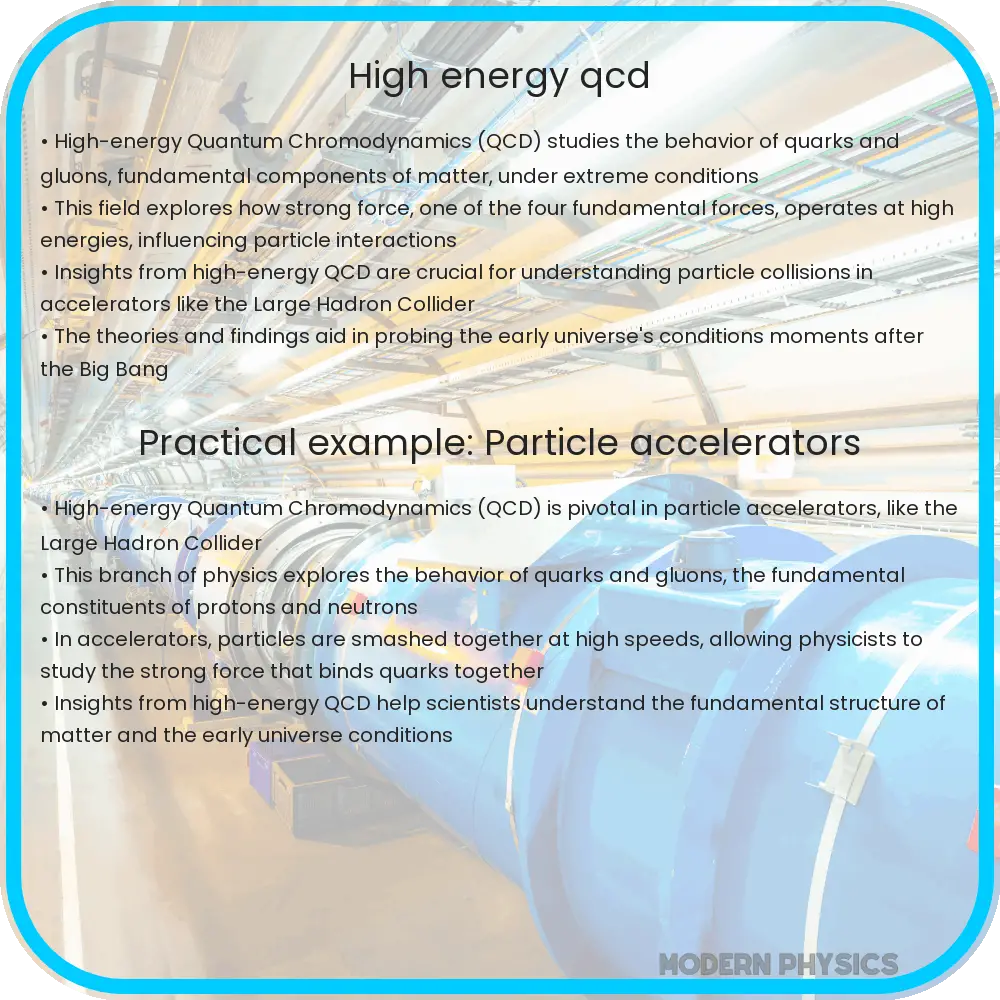Quantum Chromodynamics (QCD), the cornerstone of the theoretical framework describing the strong interactions among quarks and gluons, has found itself at the confluence of theoretical exploration and empirical scrutiny. As a quantum field theory, QCD delineates the mechanics of color charge and the interactions that govern the behavior of subatomic particles. A question keenly debated among physicists is whether QCD retains its validity at arbitrarily high energy scales. This inquiry not only delves into the robustness of the theory itself but also invokes broader topics surrounding fundamental interactions in the universe.
To embark on this investigation, it is essential to understand the nature of QCD and its fundamental tenets. At its essence, QCD describes quarks—the building blocks of protons and neutrons—as being perpetually in a dynamic dance with gluons, the mediators of the strong force. This interaction becomes significantly pronounced under high-energy conditions, reminiscent of tightly woven threads that strengthen under tension. However, the challenge emerges when considering what happens to these interactions as energy levels increase towards the theoretical infinite.
One critical phenomenon to examine in this context is asymptotic freedom, a remarkable property of QCD, which allows quarks and gluons to interact weakly at high energies. As energy increases, the effective coupling constant diminishes, leading to the impression that particles become more decoupled from one another. This behavior starkly contrasts with classical intuitions where particles typically experience stronger forces at higher energies. Yet, the inherent complexity lies in the non-abelian nature of QCD. Unlike electromagnetic interactions, which are dictated by simpler, linear equations, QCD presents a more intricate web of interactions, obscuring straightforward predictions about its validity at extreme energies.
As these interactions amplify under increasing energy conditions, one may draw parallels to a boiling pot of water. As the heat rises, bubbles of steam form, isolated yet connected through the liquid medium. Thus, at high energies, the phenomena of confinement and perturbative calculations emerge as focal points in assessing the applicability of QCD. Confinement pertains to the phenomenon by which quarks and gluons cannot be isolated as free particles; they are forever trapped within hadrons, like bees within a honeycomb, regardless of the applied energy. This behavior has been firmly established in empirical studies at lower energy scales, yet its extrapolation to higher energies raises conjectures about the extent of QCD’s reliability.
Moreover, the investigation of QCD in extreme energy landscapes is no simple endeavor. The intricate relationship between quarks and gluons hints at potential emergent phenomena such as the QCD phase transition. At sufficiently high energies, the expected behavior transitions from hadronic matter to a quark-gluon plasma, a state where quarks and gluons are no longer confined. This state resembles a liquid of fundamental constituents, a veritable sea of color charges that demands a nuanced understanding of QCD under these drastically altered conditions. These complexities introduce tantalizing questions about potential limits to QCD’s applicability. Can we indeed assert a seamless continuation of QCD’s governing laws into these uncharted territories?
Moreover, as we ponder the implications of various energy regimes, we must also consider the conceptual framework employed when theorizing such high-energy interactions. Effective field theories become instrumental; they permit physicists to extrapolate results and predictions without necessitating a full understanding of the underlying details. However, there lies a caveat. The very essence of prior validity cannot be assumed indefinitely. Much like a carefully crafted model that eventually falters under immense scrutiny, the applicability of QCD could encounter limitations at higher energies, necessitating the development of new theories or extensions to encapsulate the emergent complexities.
Additionally, the asymptotic nature of QCD, while promising, may not account for all scenarios. Quantum corrections, non-perturbative effects, and contributions from new particles or forces at extreme energies remain open questions. The search for a unifying theory, such as string theory or loop quantum gravity, hints at the likelihood of unforeseen interactions that could redefine our understanding of fundamental forces. In this bid for a perennial theory, the legacy of QCD is its role as a prerequisite; it forms the bedrock upon which contemporary physics builds, while still requiring scrutiny and potential revision in high-energy contexts.
The question of whether QCD is valid up to arbitrarily high energies serves as a reflection of our inherent quest for knowledge about the universe. Each exploration into the realms of particle physics adheres to a delicate equilibrium—a balancing act where theoretical rigor meets empirical data. As research advances through the fabric of energy realms, the resilience of QCD will ultimately be evaluated not solely on its historical successes but also on its capacity to integrate new understandings of subatomic interactions.
In light of these reflections, one may conclude that while QCD stands as an elegantly formulated theory with profound implications for particle physics, its application beyond a certain threshold of energy may not be limitless. Instead, it symbolizes a bridge between what is understood and the unknown territories of high-energy phenomenology. Armed with these insights, the pursuit continues—a quest for a deeper understanding of the universe at its most fundamental levels.












